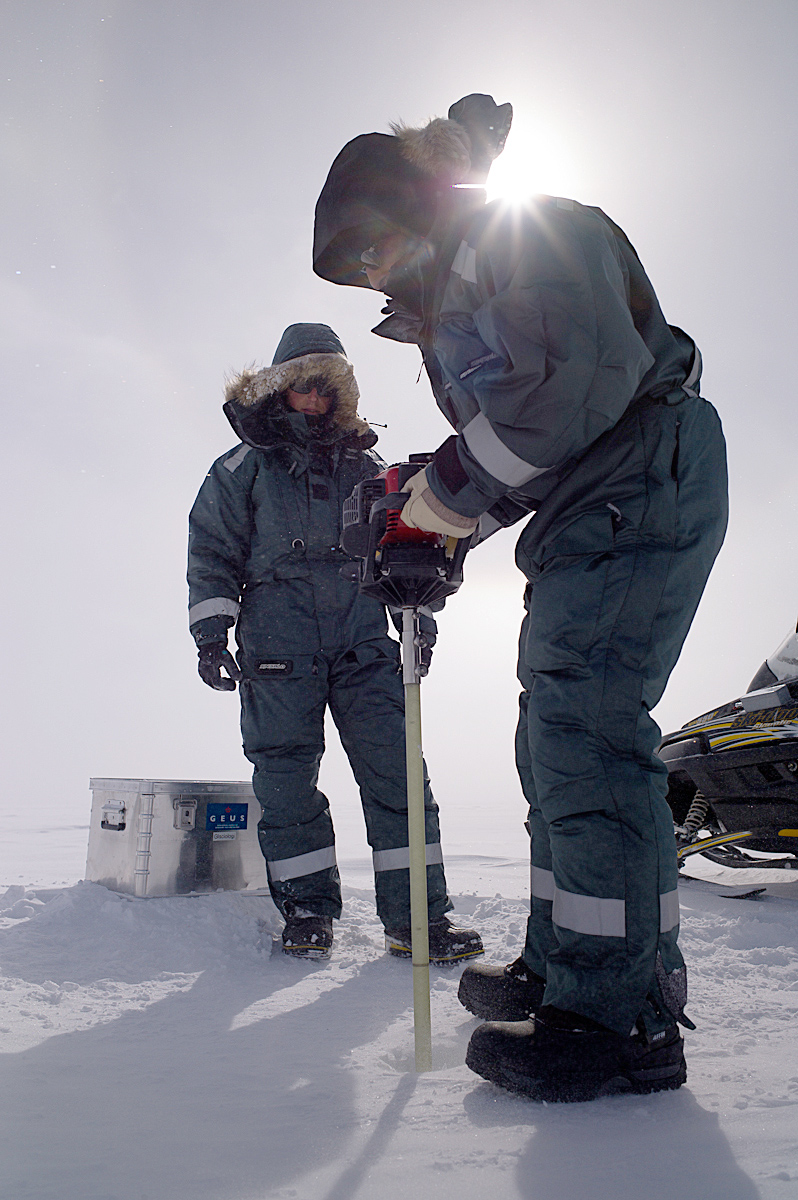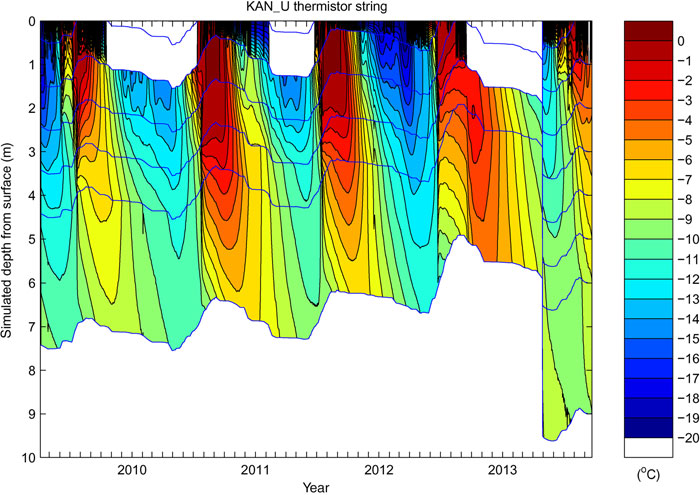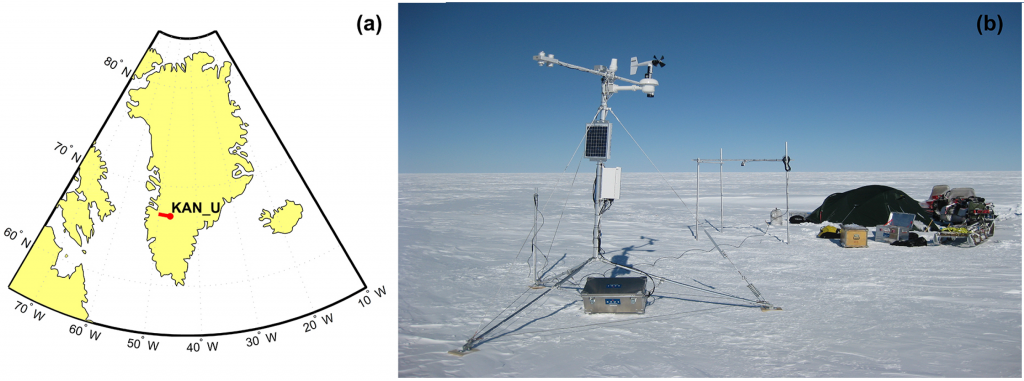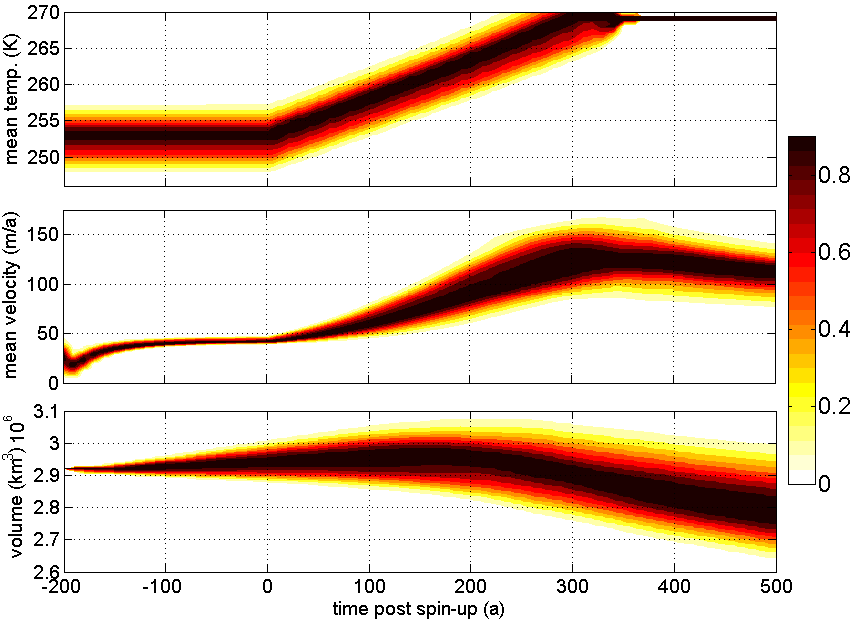We have a new open-access study that investigates the high-elevation firn plateau of the Greenland Ice Sheet in the current issue of The Cryosphere1. Firn is the relatively low density near-surface ice-sheet layer comprised of snow being compressed into ice. Firn is relatively porous, meaning that meltwater can percolate through it. The refreezing of meltwater within firn is a potential buffer against the ice-sheet sea-level contribution from surface melt; surface melt can refreeze within porous firn instead of running off into the ocean. Our study aims to assess how big this sea-level buffer might be, and how much sea-level buffer may have already been used.
We pull together a singularly unique dataset – 340 ice-core measurements of firn density collected over 65 years – to assess the near-surface density across the entire high-elevation firn plateau of the Greenland Ice Sheet. Many of these vertical firn density profiles were digitized and brought together for the first time from historical studies, but twenty are collected by our team and new to science. We analyze this ice-core dataset for empirical relations between firn density and accumulation or air temperature. This allows us to divide the ice sheet into three distinct firn areas, within each of which we can confidently predict the vertical profile of near-surface firn density.

Figure 1 – Left: Firn air content within the top 10 m (FAC10) estimated from ice-core measurements (denoted with ‘x’). The ice sheet is divided into three areas: the Dry Snow Area (DSA), the Low Accumulation Percolation Area (LAPA), and the High Accumulation Percolation Area (HAPA). Right: Change in top 10 m firn air content between 1998–2008 and 2010–2017 within Low Accumulation Percolation Area along the ice sheet’s western flank.
We find that the firn structure at the heart of the ice sheet – the highest, coldest and driest firn known as the Dry Snow Area – appears to have been stable since 1953. There is no trend in firn density within the Dry Snow Area. At lower elevations, however, we find significant changes in response to recent increases in surface melt due to climate change. The area we call the Low Accumulation Percolation Area – an elevation band of relatively low snowfall and high melt along the ice sheet’s west flank – has a marked increase in the firn densities measured pre- and post-2009. This firn density change is equivalent to a sea-level buffer loss of 1.5±1.2 mm sea-level equivalent (540±440 gigatonnes).
We compare the ice-sheet-wide firn density structure that we estimate from ice-core measurements with the firn density structure estimated from three regional climate models. The regional climate models suggest that the decrease in firn porosity initiated in the early 2000s and accelerated with post-2010 climate change. But we also find non-trivial differences between the firn porosities simulated by regional climate models, and that inferred from ice-core measurements, especially in what we call the High Accumulation Percolation Area. Here – the ice sheet’s low elevation southeast flank – modeled firn porosity can be biased the equivalent of between 3 and 7 meters of air distributed over the entire firn column depth.

Figure 2 – Left: Ice-sheet-wide firn air content within the top 10 m of firn (FAC10) simulated by three regional climate models (MAR, HIRHAM and RACMO) and derived from ice-core observations (this study) in different ice-sheet areas. Right: Same for firn air content over the entire depth of the firn column (FACtot).
This study highlights the importance of bringing together firn density measurements to document the response of ice-sheet firn – a non-trivial component of the sea-level budget – to recent climate change. The ice-sheet-wide firn porosity structure we infer from ice-core measurements can also serve as an independent evaluation target for the firn porosity structures simulated by regional climate models. This study also illustrates how new insight can be obtained from the synthesis and re-analysis of historical datasets. This emphasizes the tremendous value of open-access data within the scientific community. This work is part of the Retain project funded by the Danmarks Frie Forskningsfond (grant 4002-00234). The open-access publication is available via the hyperlink below.
Fresh Research! — Have you heard that increasing surface melt is filling the near-surface pore space of the Greenland Ice Sheet? Well, we’ve put some *big* numbers on that process! ❄️
blog: https://t.co/JYpeoOiysu
article: https://t.co/vGdpnczWXB
funding: @DFF_raad @NASA pic.twitter.com/ljlAd1ga5B— William Colgan, Ph.D. (@GlacierBytes) March 12, 2019







